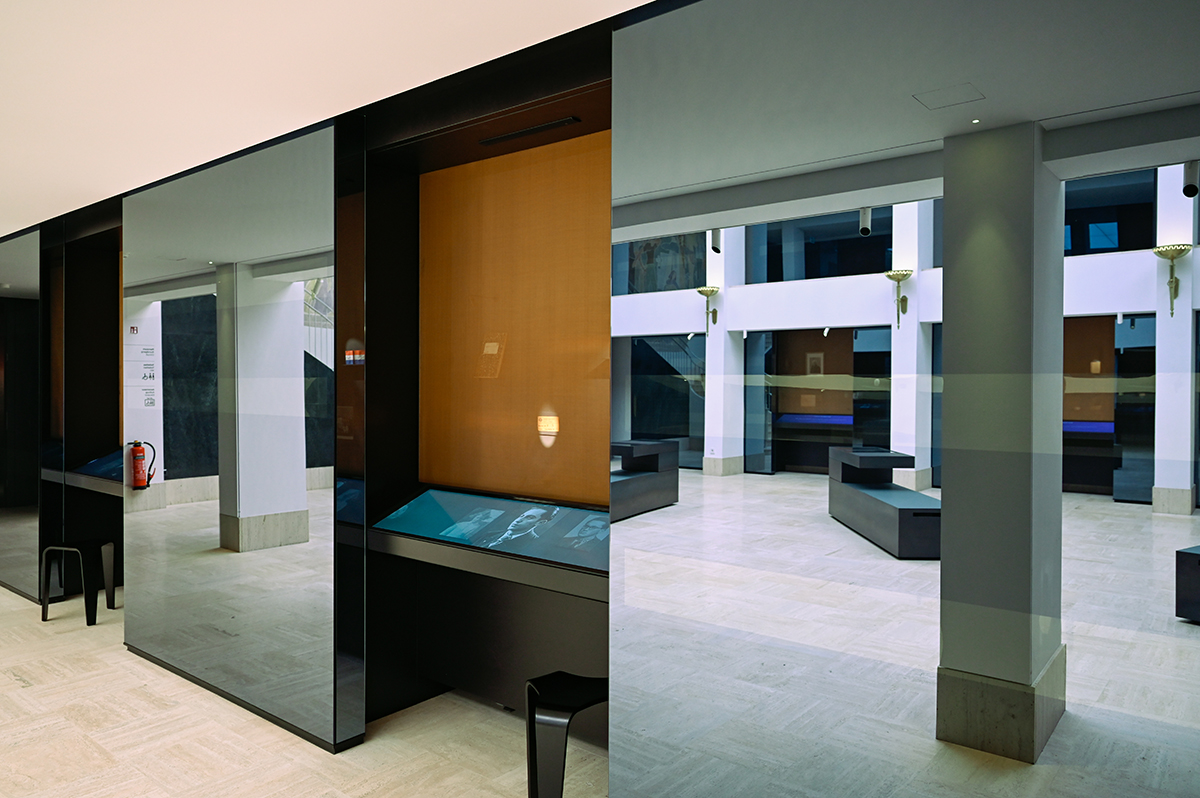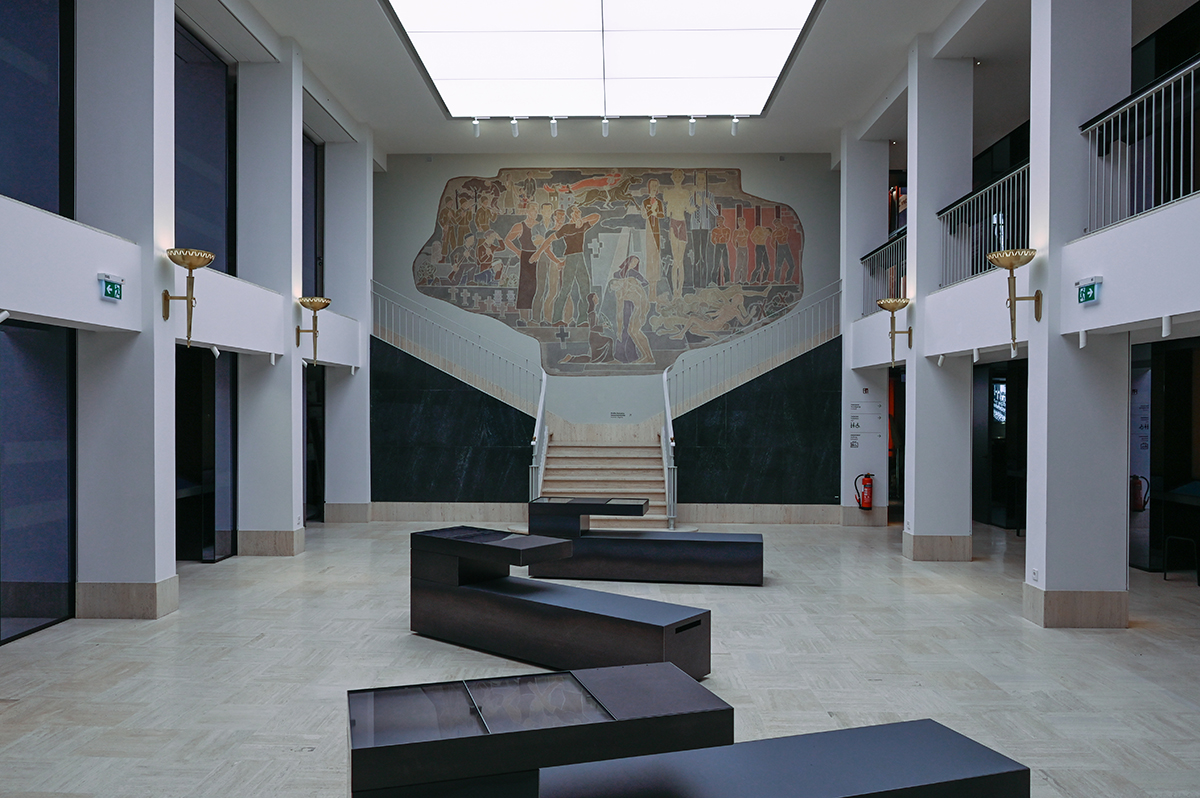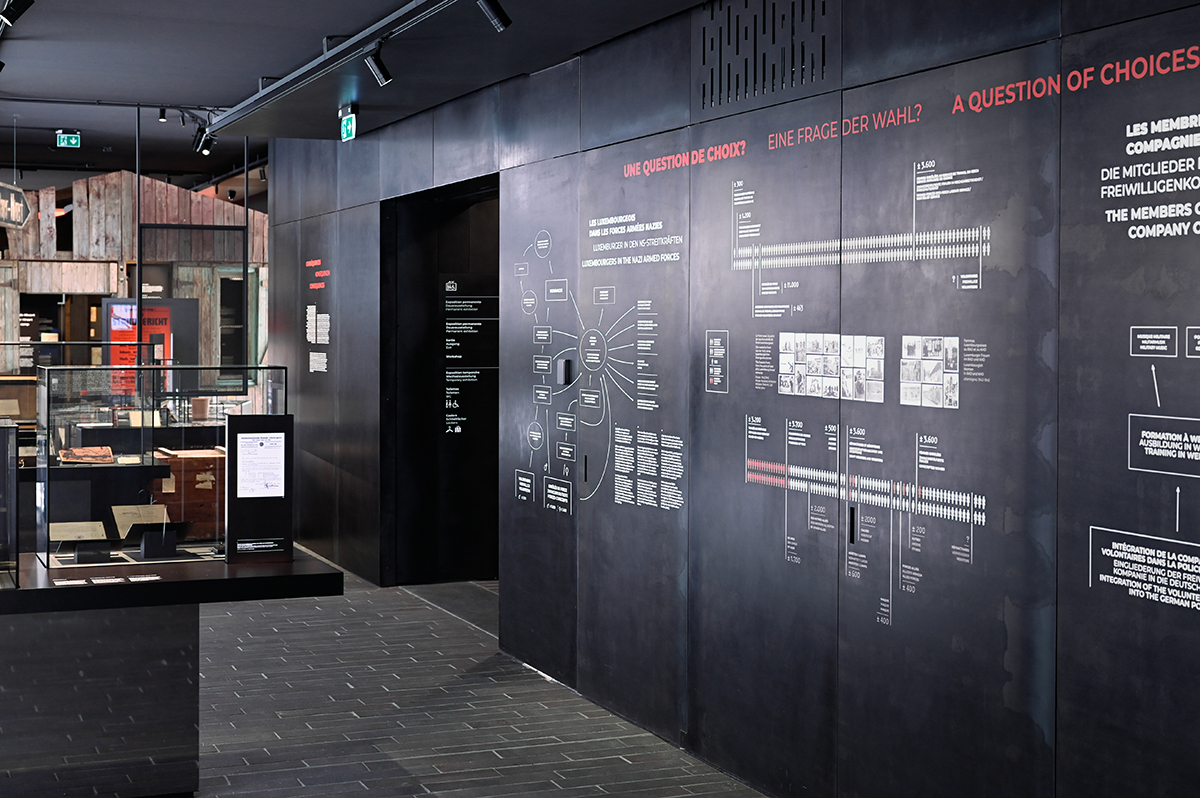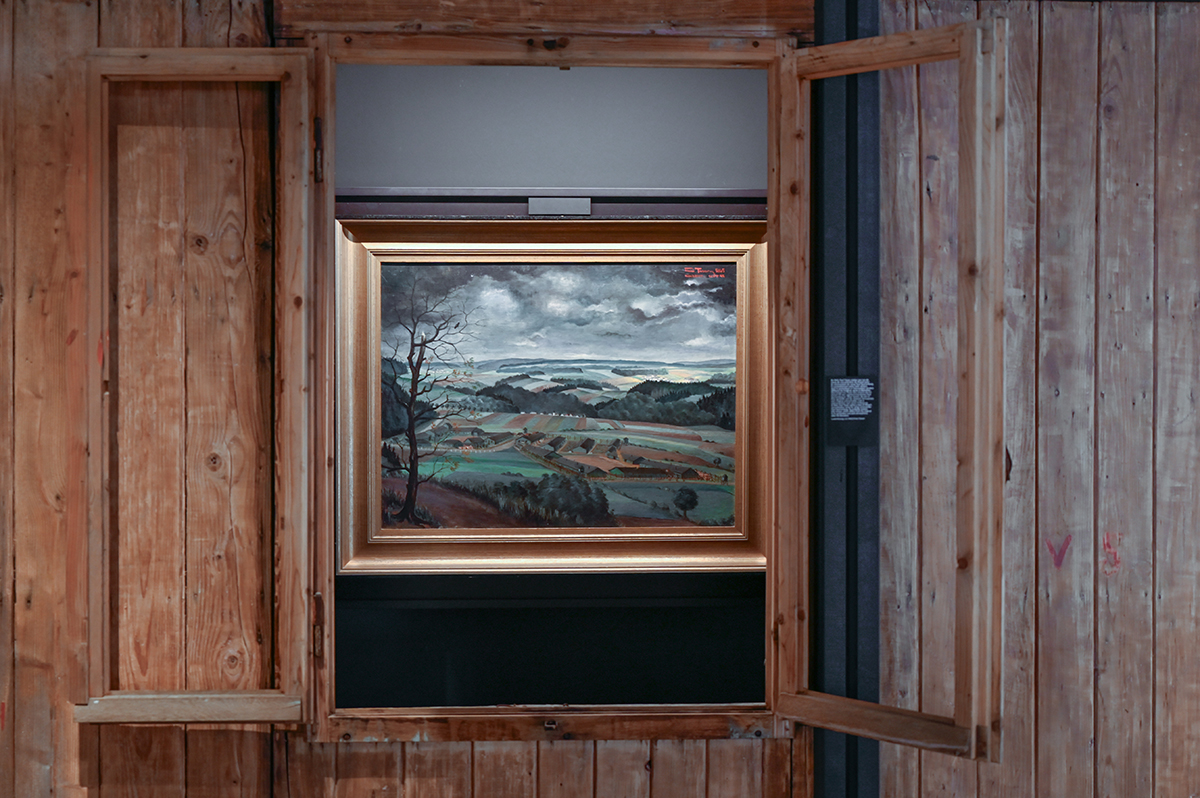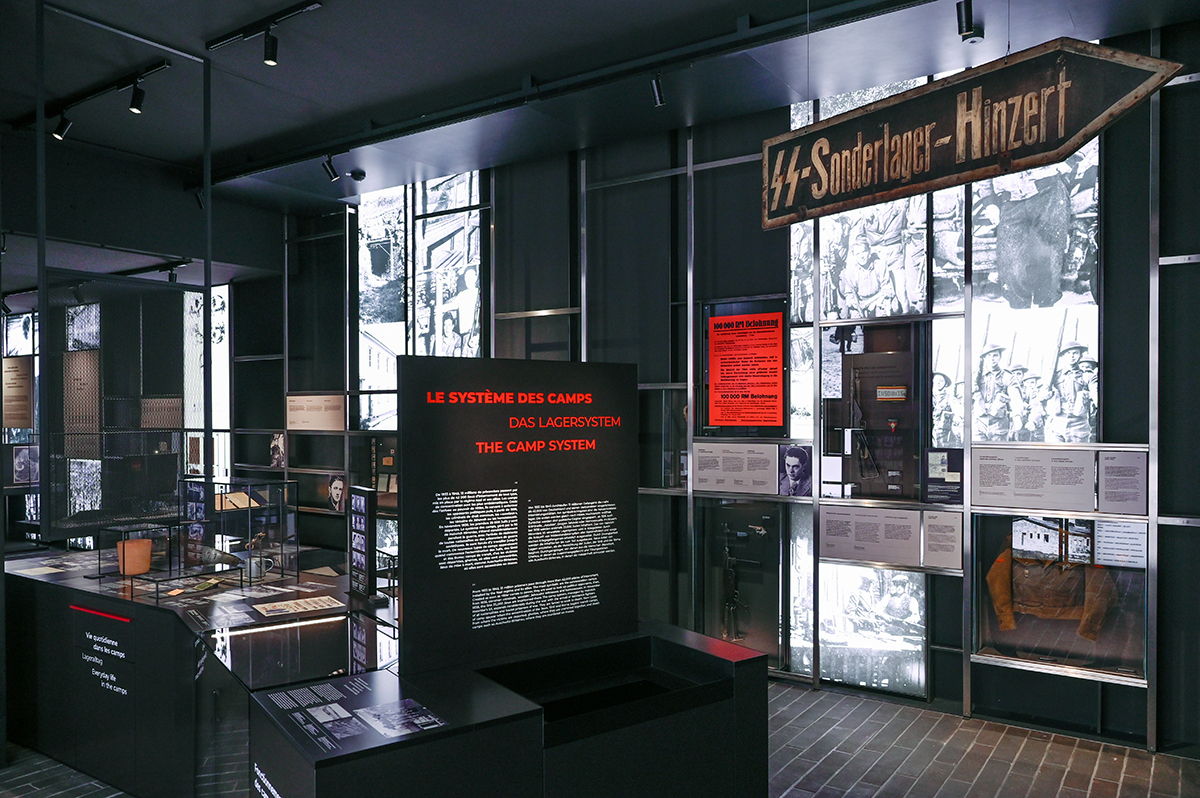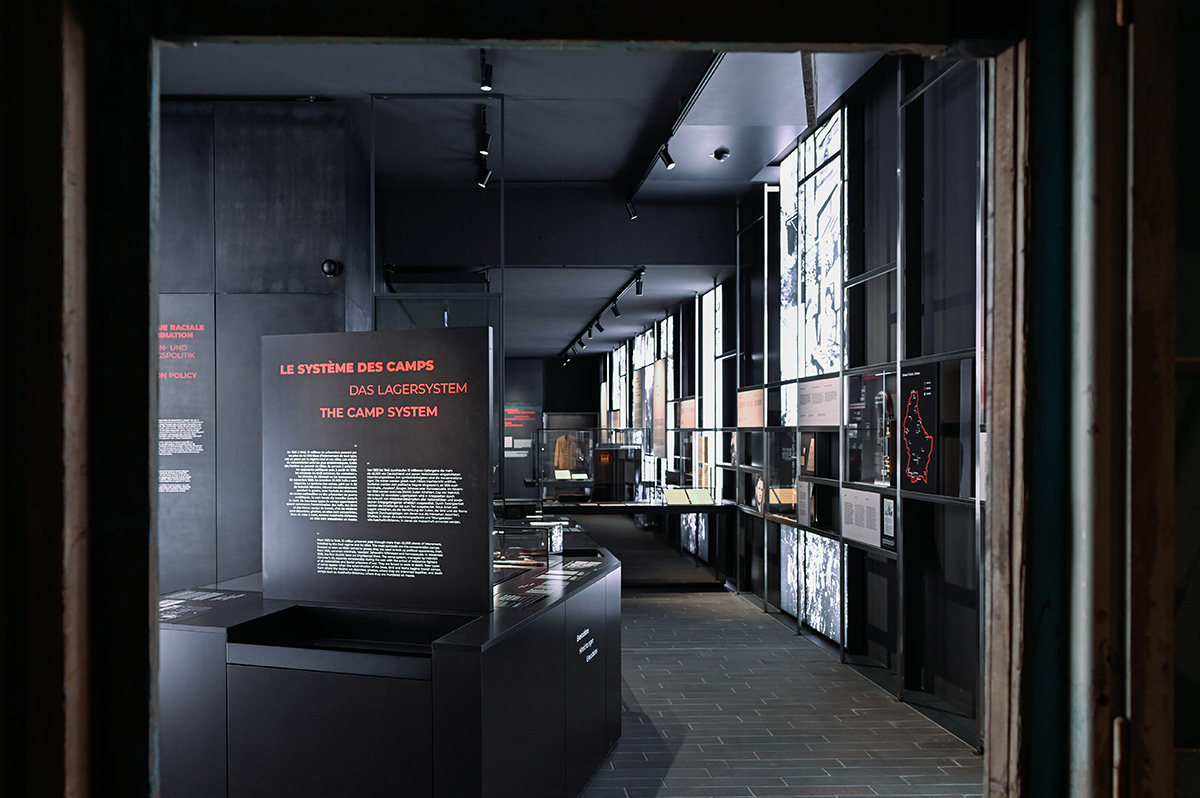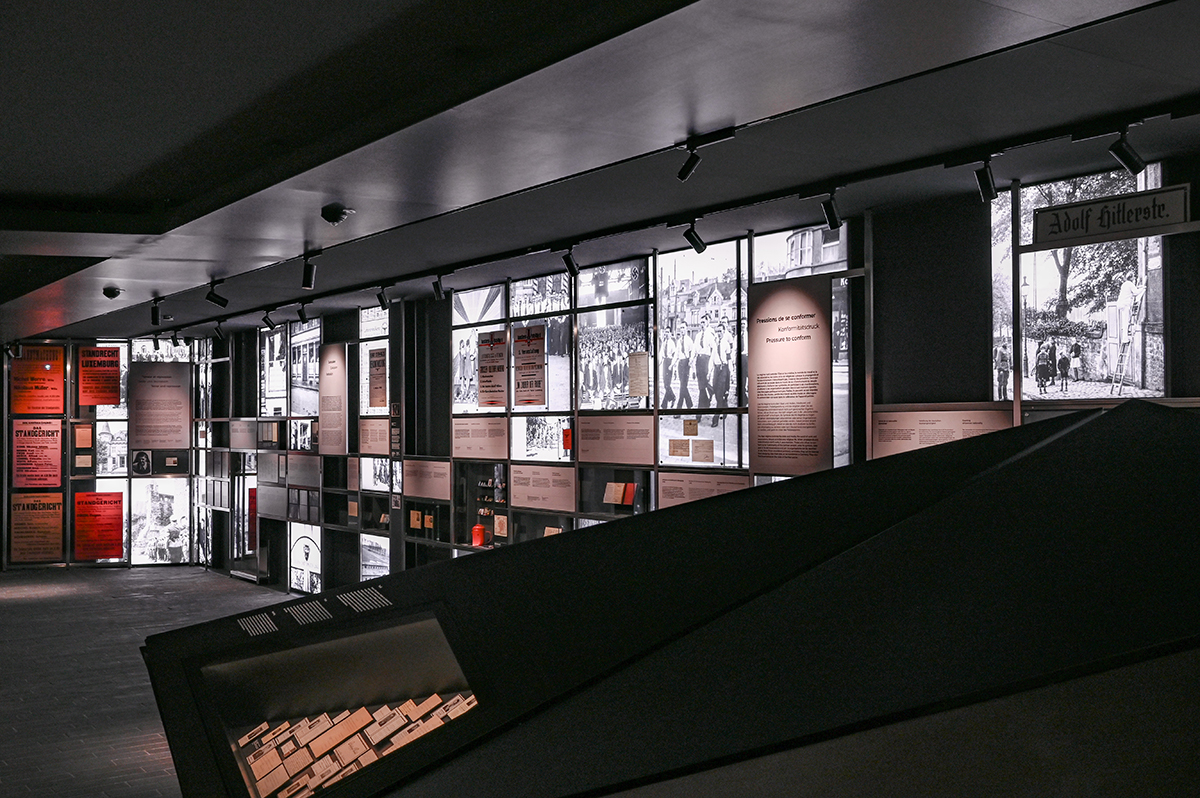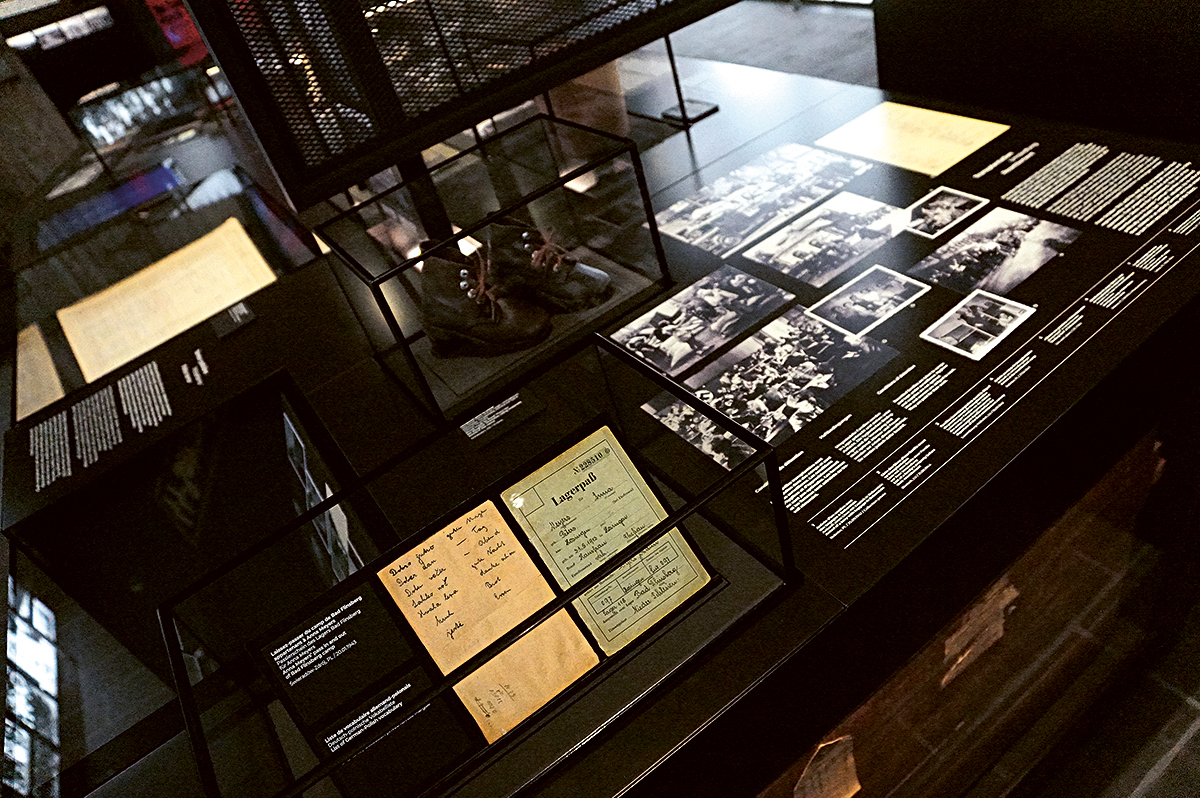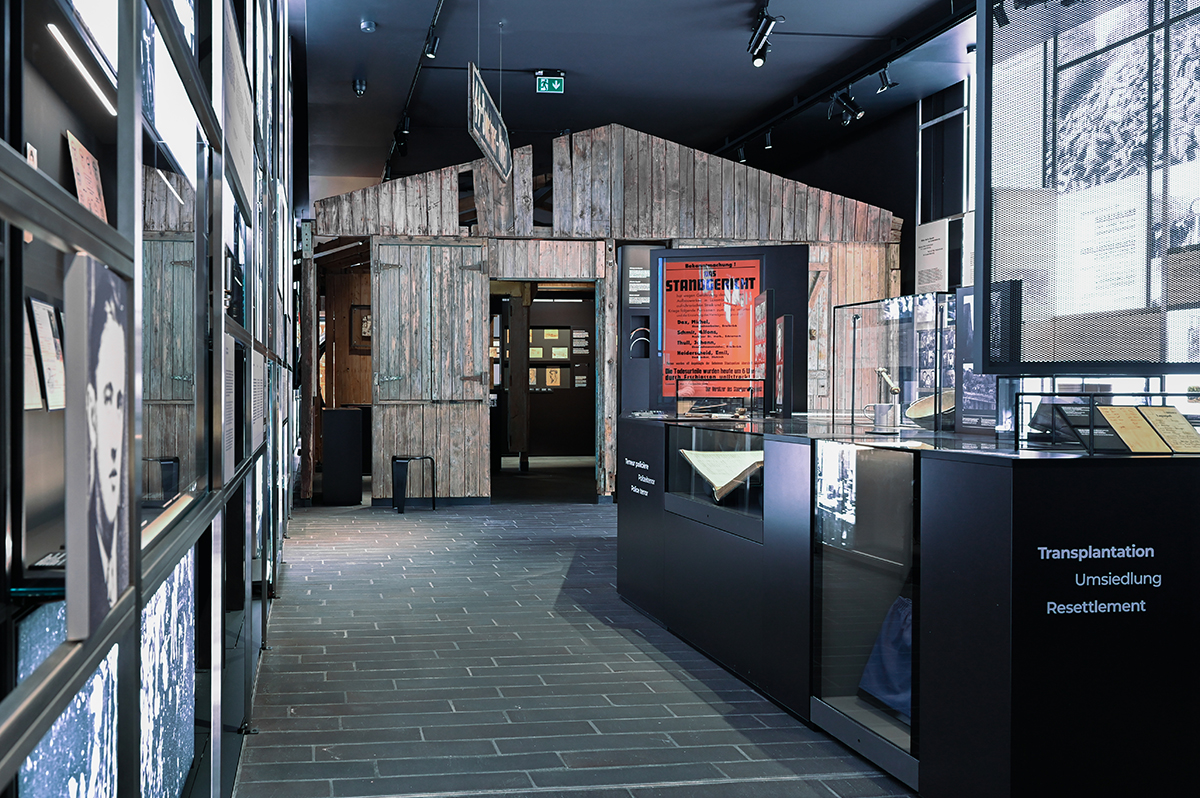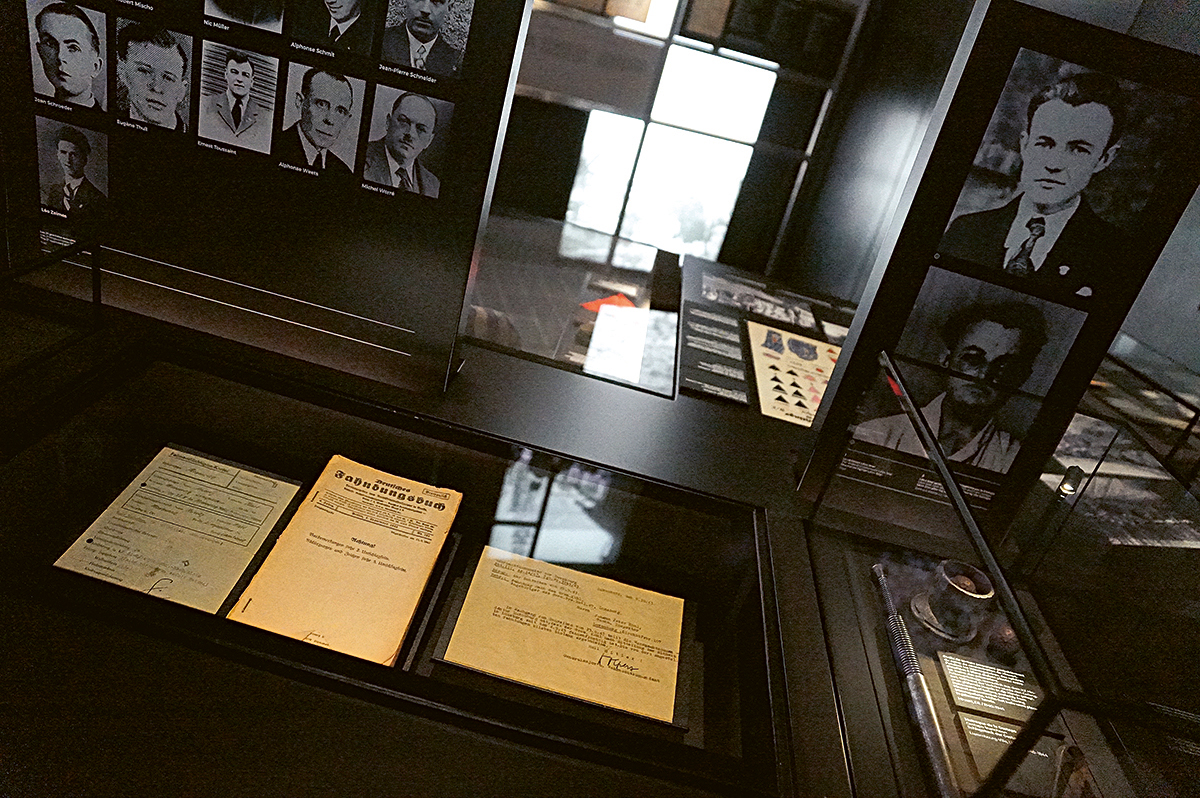Exhibitions & events
Permanent exhibition
New permanent exhibition from march 1st 2024.
CLICK HERE to book a guided tour.
Monday to Friday from 8 am to 6 pm
Weekends from 10 am to 6 pm
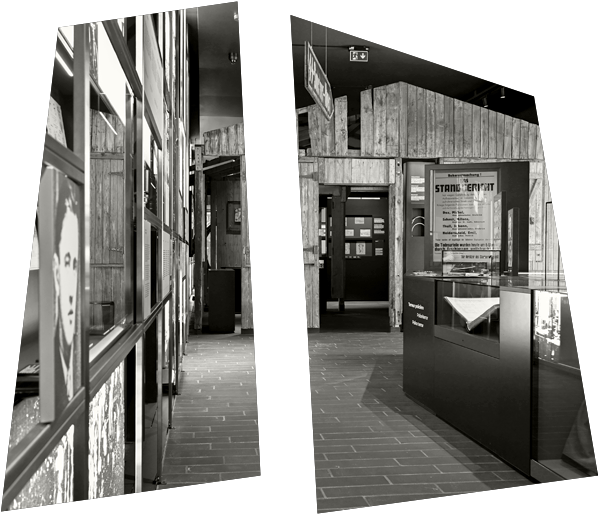
The trilingual permanent exhibition (FR, DE, EN) will cover a wide range of topics related to the Second World War period, including: the interwar period, life under the dictatorship and the repression, the reactions of the population, the Nazi structures, the concentration camps and the Holocaust, as well as the post-war period. A presentation of human rights and civil resistance completes the exhibition.
The museum also includes a memorial area with urns containing soil recovered after the war from various concentration camps and the sculpture “The Political Prisoner” by Lucien Wercollier.
Sections of the permanent exhibition:
INTRODUCTION IN THE HALL
- Resistance
- Biographies
EXHIBITION ON THE GROUND FLOOR OF THE NEW WING
- Interwar period
- NS-structures
- Daily life in a totalitarian state
EXHIBITION ON THE 1ST FLOOR OF THE NEW WING
- Reactions and the resulting actions:
- collaboration
- resistance
- forced conscription and the volunteer company
- Consequences :
- Nazi repression
- resettlement camps
- concentration camps
- art in the camps
- The Holocaust
- The liberation
- Post-war period
- Memory work
CONCLUSIONS ON THE HALL GALLERY
- Human rights
- Biographies
- Human rights and resistance
Admission to the permanent exhibition also includes access to the temporary exhibition "Forgotten Victims".
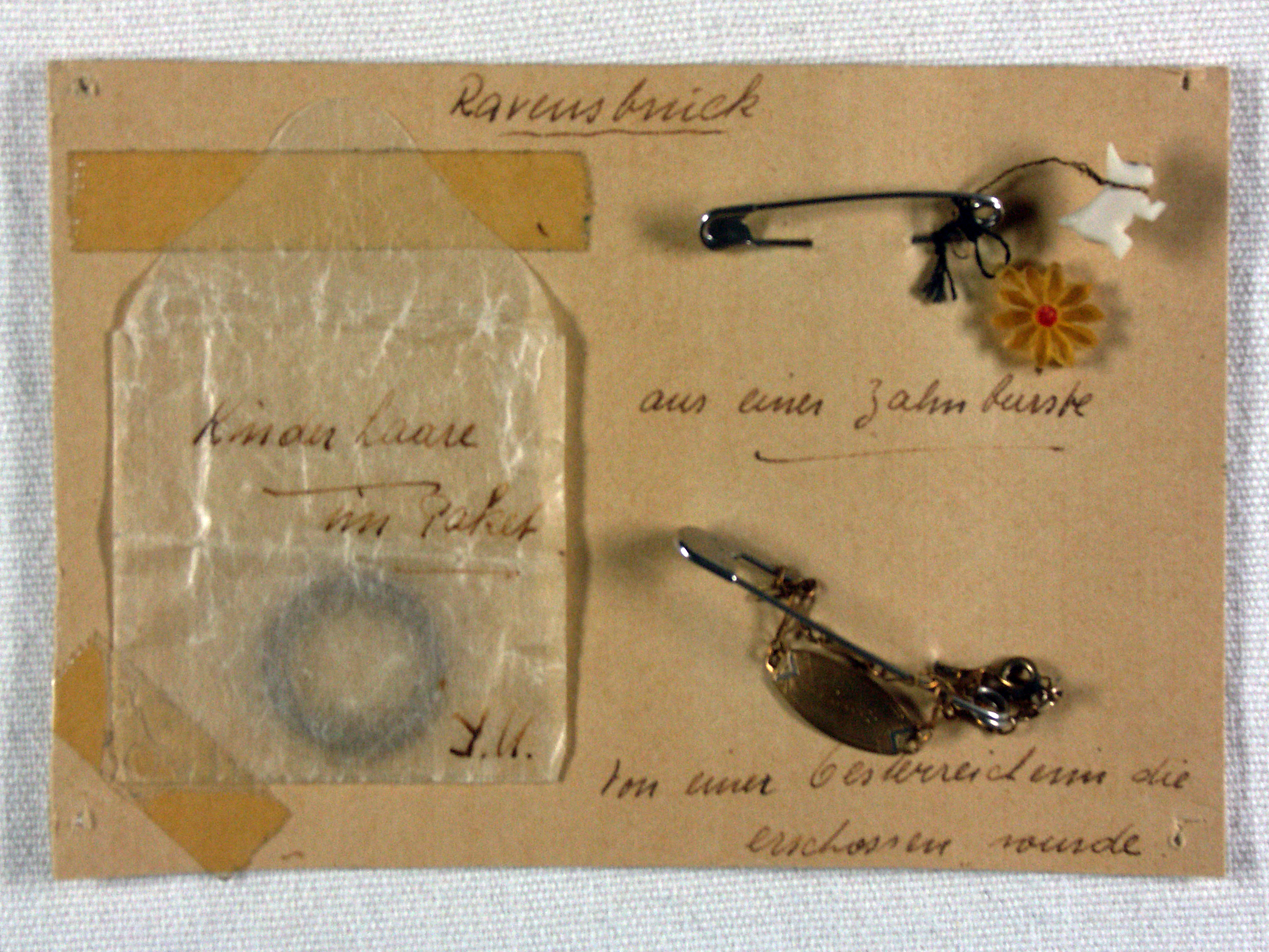
Souvenirs from the Ravensbrück concentration camp


Souvenirs from the Ravensbrück concentration camp
Undated, different materials on cardboard, 15x10,4cm, MNRDH.
The prisoners try to raise the morale of their fellow prisoners through gifts and to show that despite their dehumanisation by the Nazis, they are still human beings with feelings, fears, dreams and desires.
On this card, Yvonne Useldinger, a communist resistance fighter detained at Ravensbrück, recorded some memories of this solidarity among prisoners.

Forged identity document


Forged identity document
Côte d'Or 14.5.1943, various materials, 15x11,2cm, MNRDH.
To go completely underground, you need a new identity.
Luxembourgish resistance groups like the PI-Men provide draft dodgers, deserters and political refugees with false passports and IDs before they are taken across the border to France or Belgium
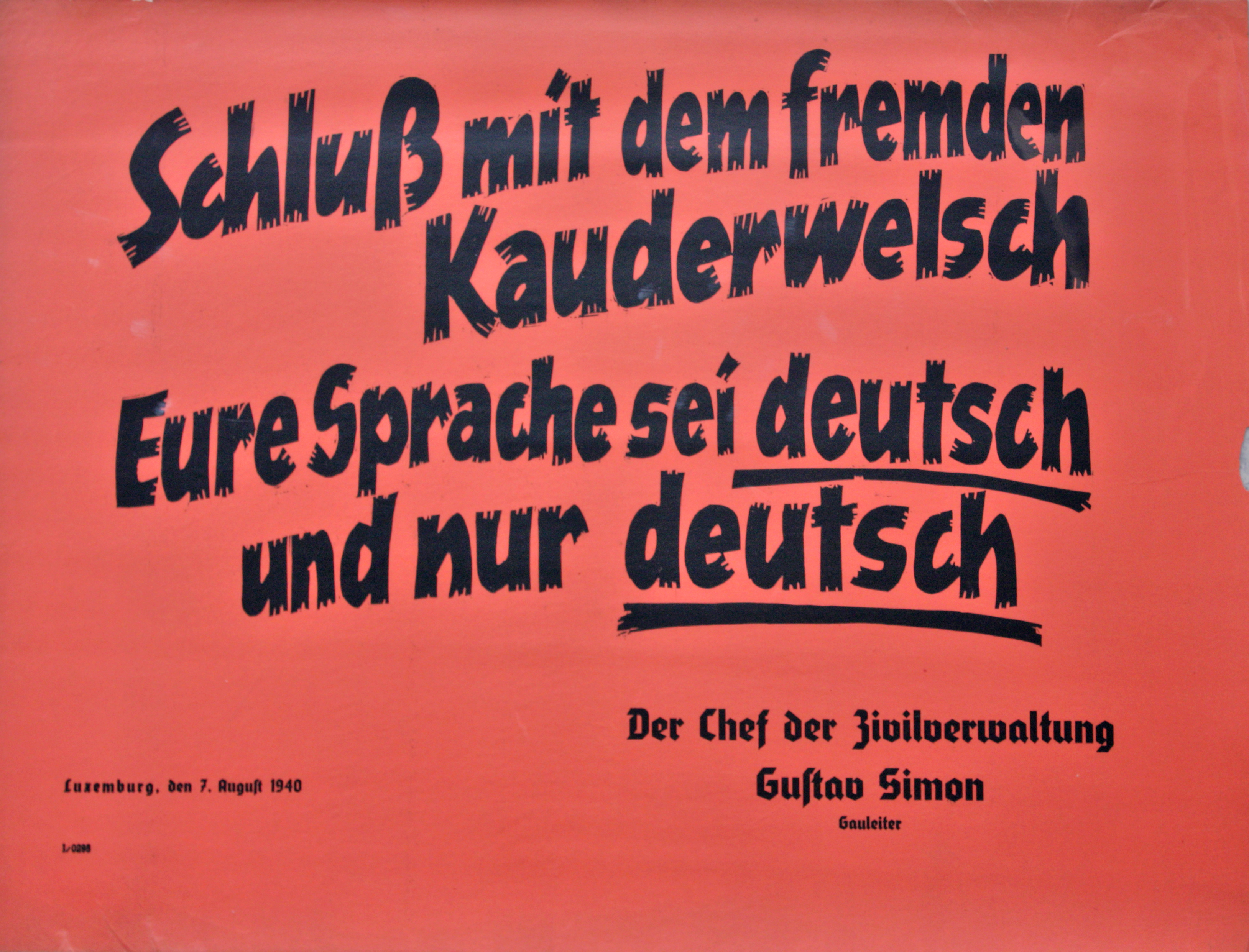
Poster "Eure Sprache sei Deutsch"


Poster "Eure Sprache sei Deutsch"
Luxembourg 7.8.1940, printed paper, 60,5x85,5cm, MNRDH.
With posters such as "Eure Sprache sei Deutsch" (your language is German), Gauleiter Gustav Simon tries to convince the Luxembourgers that they are Germans.
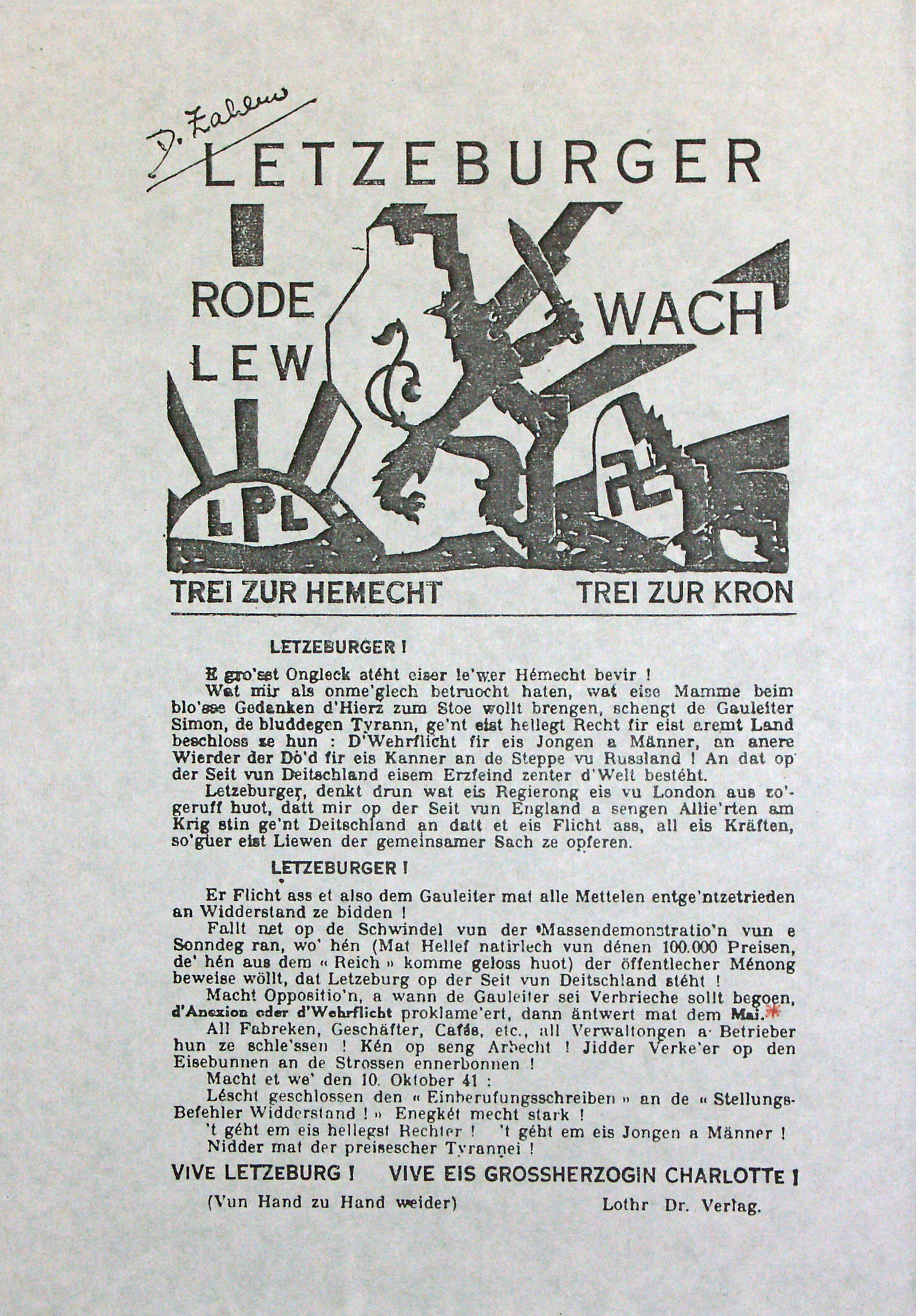
Call for a "general strike"


Call for a "general strike"
Josy Fellens, Brussels 1942, printed paper, MNRDH.
Call for a "general strike" against the planned forced recruitment of Luxemburgers into the German armed forces.
Printed by Luxembourg resistance groups in Brussels, the call was to be smuggled into Luxembourg and distributed.
By mistake, the word "Generalstreik" is replaced by "maj." when printed. The term "maj." for majuscule was actually intended as a note to the printer to write "Generalstreik" in capital letters.
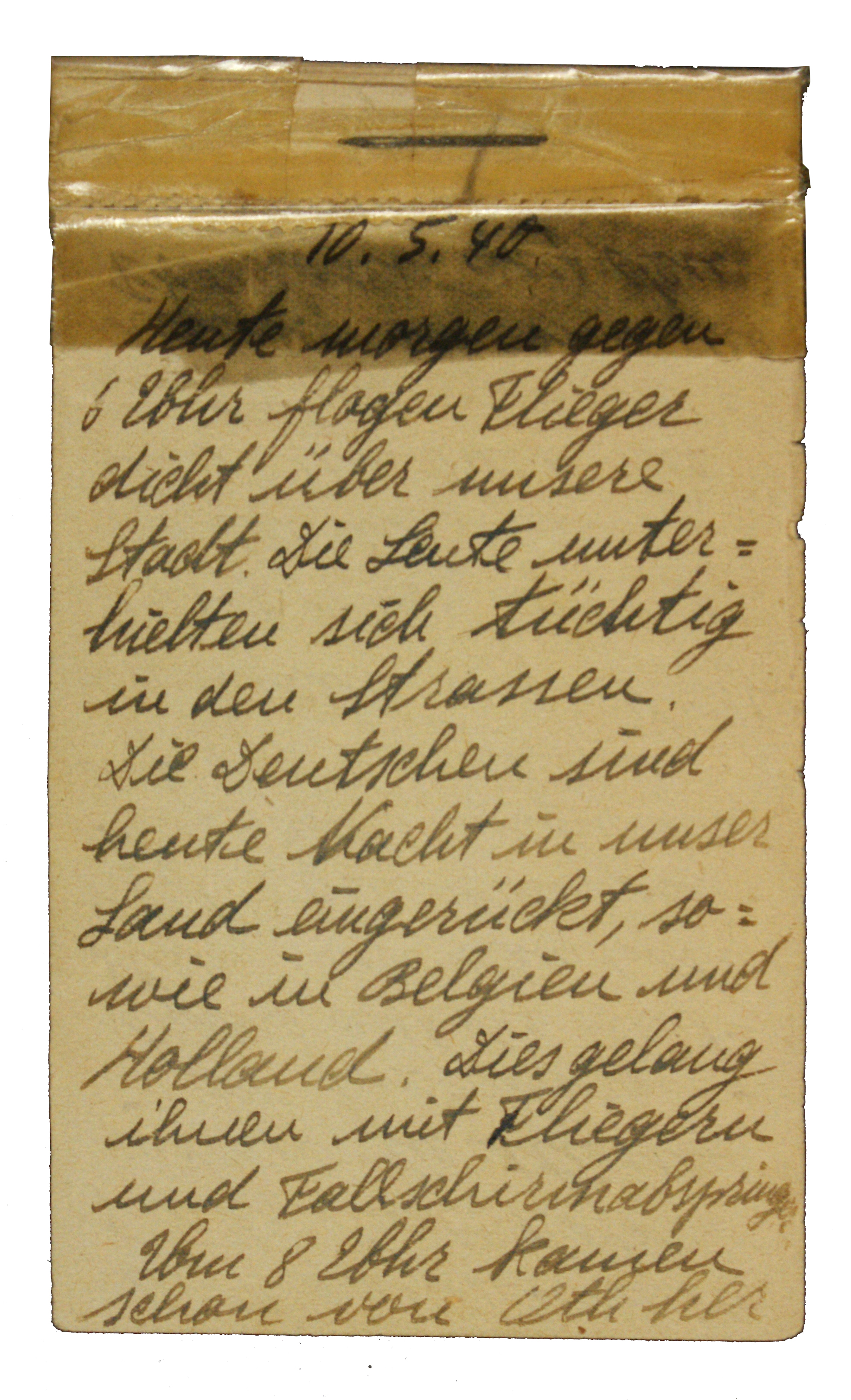
Memories of the Invasion of Luxembourg


Memories of the Invasion of Luxembourg
France/Luxembourg 10.5.1940-27.9.1940, printed paper, 10,2x6x0,4cm, MNRDH.
After the invasion of the German Wehrmacht, the population of the south of the country is evacuated to France or inland.
Setty Garçons, who lives in Esch/Alzette, goes to France.
She records the time of the evacuation in her diary.
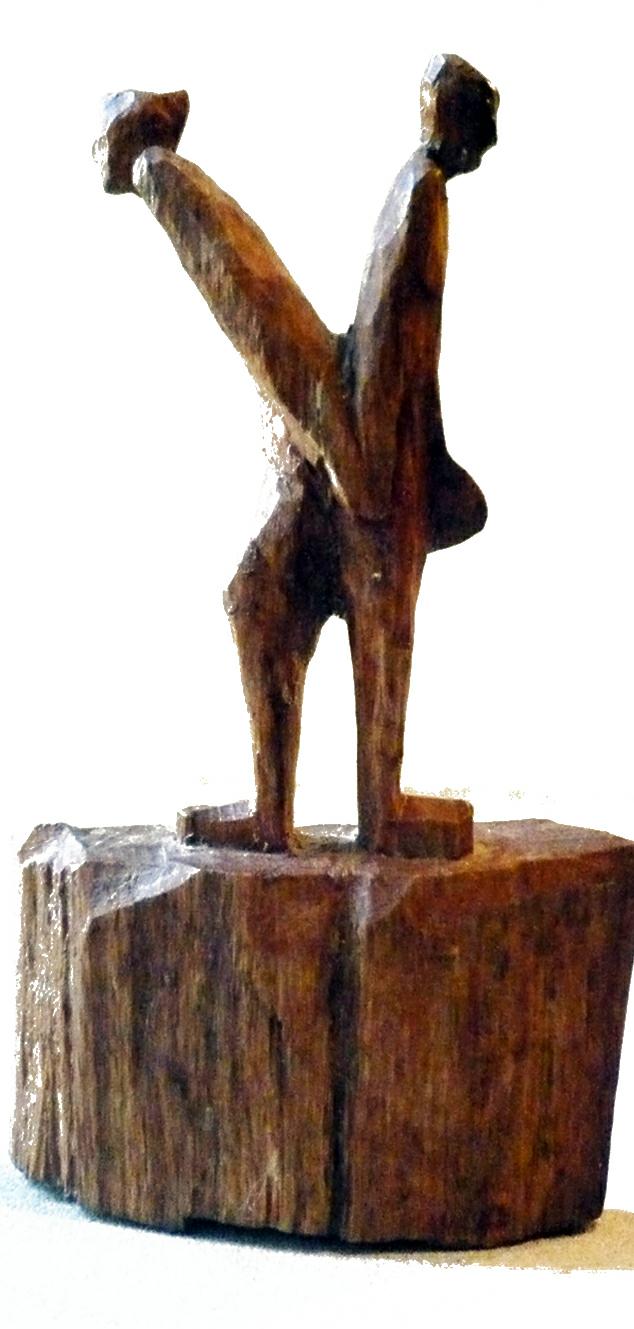
"The Political Prisoners" by Jean Daligault


"The Political Prisoners" by Jean Daligault
Hinzert 1942/43, wood, 10,8x6,2x2,2cm, MNRDH.
The wooden sculpture "The Political Prisoners" by the French resistance fighter Jean Daligault shows two prisoners standing in the roll call area, tied back to back as punishment.
Daligault donated the sculpture to the Luxembourg artist Lucien Wercollier, who took up the motif again in his own artworks after the war.

Néckel Spielmann's prosthesis


Néckel Spielmann's prosthesis
Buchenwald 1944, different materials (aluminium, leather), 88x20x13cm, MNRDH.
Prosthesis made by Néckel Spielmann in Buchenwald concentration camp.
In August 1944, Spielmann's leg was amputated as a result of an American bombardment of the Gustloff factory near the camp.
Luxembourgish fellow prisoners, including Jhemp Schmit and Gust Schaffner, secretly made this prosthesis for him from aluminium and other materials.
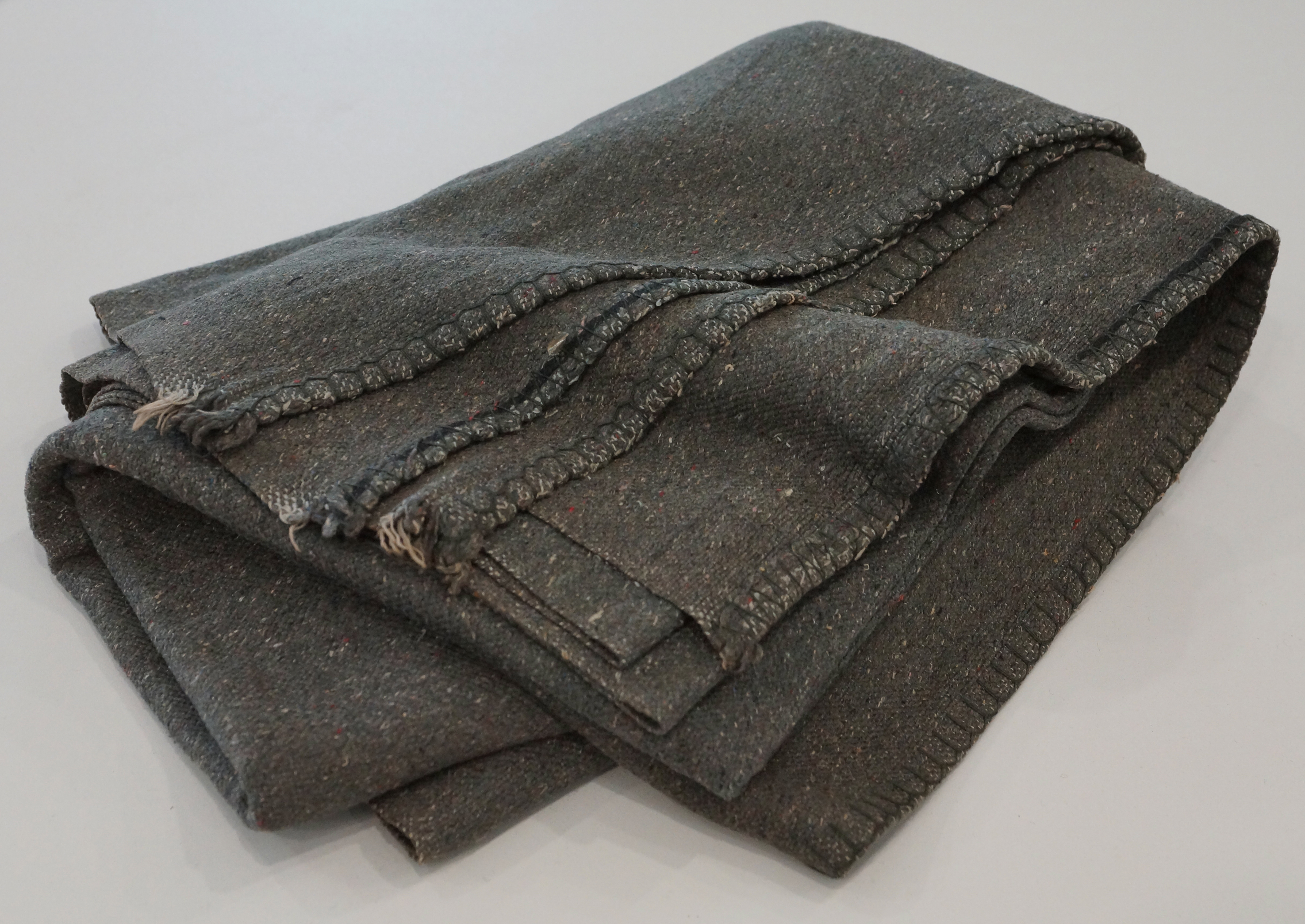
Blanket from the Kriegshilfsdienst


Blanket from the Kriegshilfsdienst
Hermsdorf 1945, cloth cover, 187,3x141cm, MNRDH.
From this blanket from the Kriegshilfsdienst (KHD), a French prisoner of war makes a backpack for Marie Bonichaux, a Luxembourgish forced recruit, which she uses to travel home to Luxembourg after her liberation by the Americans.
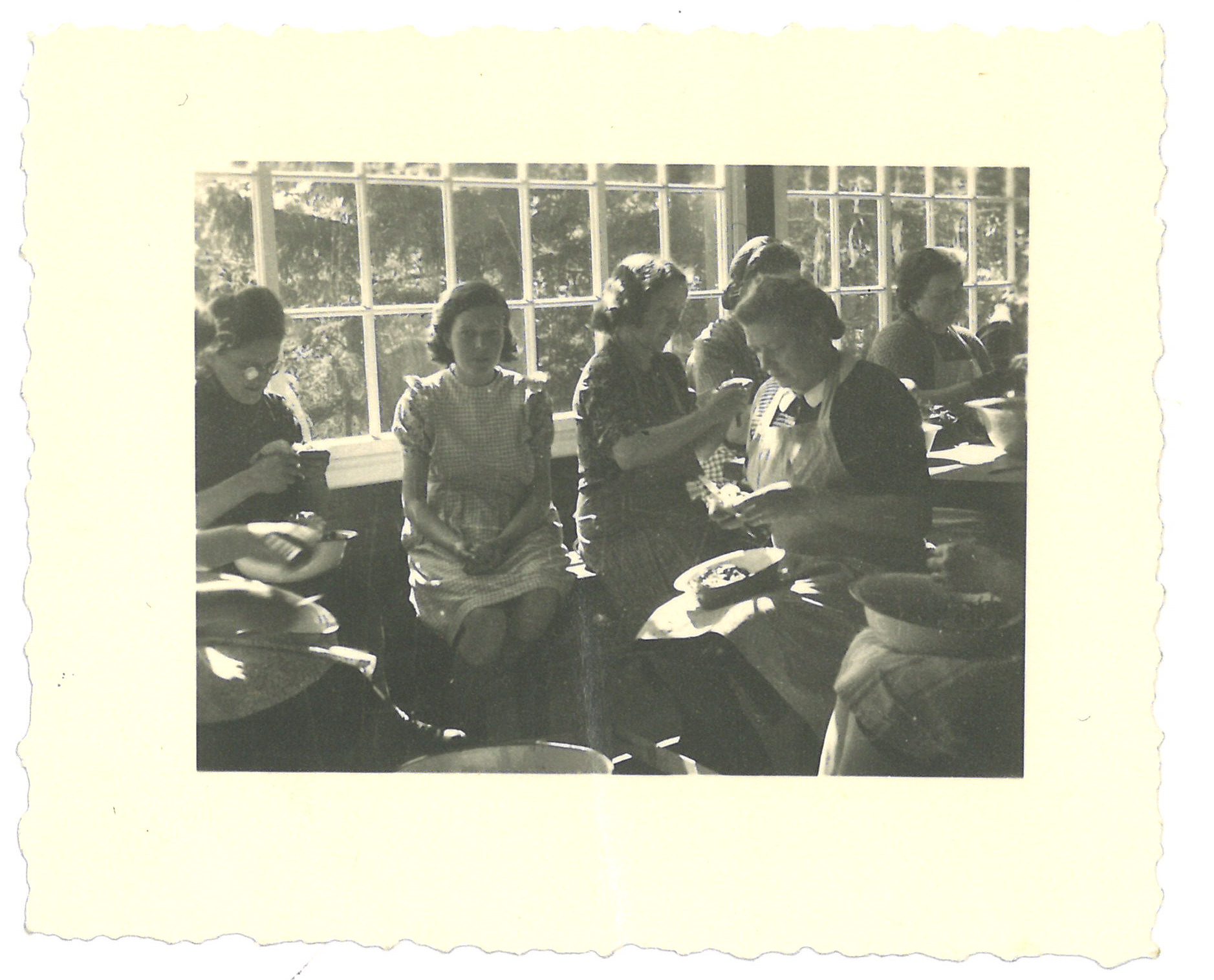
Jehovah's Witnesses in the camp in Bad Flinsberg


Jehovah's Witnesses in the camp in Bad Flinsberg
Bad Flinsberg, date and photographer unknown, photograph, 6x7,5cm, MNRDH.
As ideological opponents of the Nazi regime, Jehovah's Witness Ketty Federspiel and her six children were resettled to Leubus and later to Bad Flinsberg and Wartha on 25/26 September 1942. This photo shows Ketty and her daughter Maria on kitchen duty in camp 116 in Bad Flinsberg.
